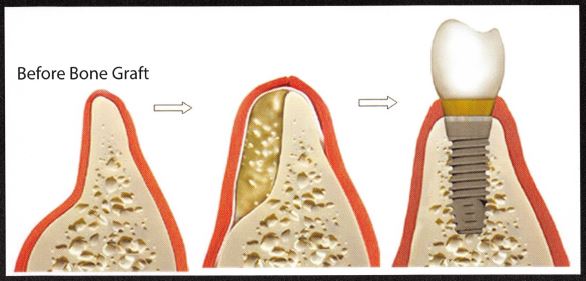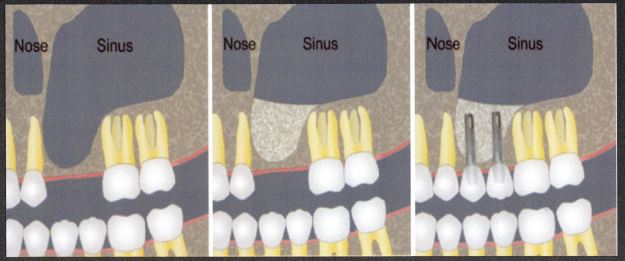iSmile Dental Case Portfolio
The Merits of Dental Implants
Why Should I Pick Implants Over a Removable or a Regular Bridge?
A dental implant can be broken down into 3 significant factors: the titanium fixture (which takes on the role of the root of the tooth), the abutment (which serves as a base and sturdy connector between the implant fixture and the crown), and the crown which completes the tooth-like structure of dental implant).
Titanium has the curious ability to fuse with bone – this is called osseointegration – and it’s this factor that allows the dental implant to be the closest alternative dental science has to offer as a replacement for lost teeth (short of rowing you a new tooth).
A removable option (i.e. dentures) has the prosthetic simply floating above your gums. Without the physical presence of “tooth roots,” your bone just recedes away. This recession can affect the teeth around the missing tooth/teeth, weaken your bite force and even alter your facial structure.
You find similar negatives in the natural bridge, except that in this case, you’re shaving away the adjacent teeth to hold up the pontic (the crown that fills in the space of the missing tooth). It’s always ideal to keep whatever natural tooth structure you have (though at times this is not always possible).
Dental implants certainly are costly when you look at monetary values alone, but the long term quality of life it can afford you is undeniably great.
Here at iSmile Dental, we provide a customized dental implant at more than reasonable costs with highly experienced doctors on staff.
Plasma Rich Fibrin (PRF)
What is Plasma Rich Fibrin (PRF)?
PRF contains large quantities of growth factors that have been focused on guided-tissue regeneration techniques. This therapy can enhance tissue grafting procedures by reducing healing times, and by decreasing pain and swelling.
What are the benefits of Plasma Rich Fibrin (PRF)?
You don’t have to worry about the PRF being rejected or harmful to you -it’s a byproduct of your own blood so biocompatibility is guaranteed. You’ll enjoy faster and better healing due to the rich growth factors increasing tissue synthesis and faster regeneration. This affords you a reduced likelihood of infection, failed grafts, and/or failed dental implants.
Bone Graft and Sinus Augmentations
There is always a chance that dental implants can fail. Dr. Kim’s implant failure rate is minuscule due to her skill and experience, however, the doctor’s skill and experience isn’t the only factor in determining the success rate of an implant. This is why we may recommend additional treatments such as PRF, bone grafts, and sinus augmentations to give our patients the best conditions for a stellar final outcome. When the current condition of the patient’s bone is not optimal, a bone graft or sinus augmentation can greatly increase the success rate as well as the quality of the restoration.
Bone Graft

You can see in the infographic that the bone has receded away substantially, leaving a thin ridge for the doctor to work with. With the help of a bone graft we’re able to get a stable bone mass to keep you dental implant in place.
Sinus Augmentation

Similarly, we can achieve a stable bone mass in cases where the sinus is sparse by performing sinus augmentations.










